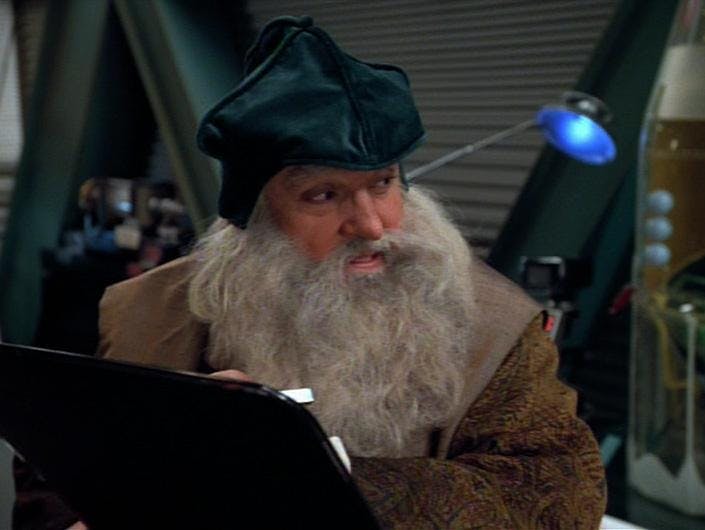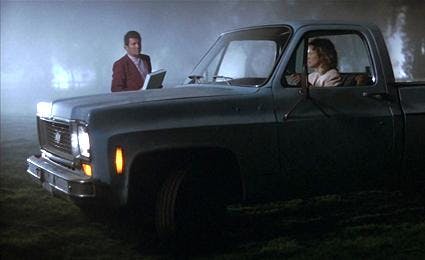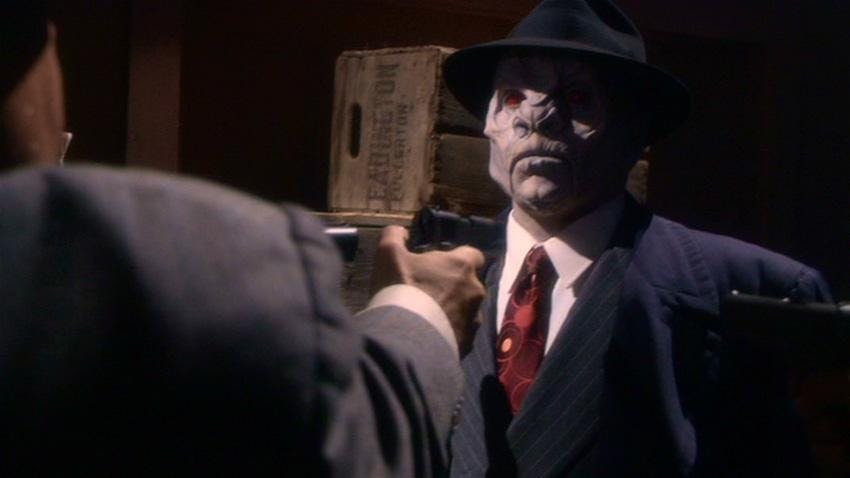Published Sep 2, 2012
Jefferies Tubes #2: Italians and Star Trek
Jefferies Tubes #2: Italians and Star Trek

Kirk: “I love Italian…and so do you.”Spock: “Yes.”
Star Trek IV: The Voyage Home From its beginnings, Star Trek emphasized racial, ethnic, and gender diversity through both its narratives and its characters. Montgomery Scott and Pavel Chekov, for example, both had strong ethnic identities, and in Chekov’s case especially, ethnic pride.
While Star Trek has never had a main character identified through dialog as being of Italian heritage (although it is possible using onomastics that Geordi LaForge may had Italian ancestors), several recurring and episodic characters are arguably of Italian heritage.
Holographic mentors seem to be a preferred style for Trek’s recurring Italian characters. On Deep Space Nine, holographic singer Vic Fontaine was sage to characters such as Odo and Nog. Voyager introduced its own holographic mentor for Captain Kathryn Janeway in the form of famous real world Italian artist/scientist Leonardo da Vinci, played by genre favorite John Rhys-Davies. While not appearing in as many episodes as Vic, Leonardo da Vinci’s workroom and advice were important elements of the show’s fourth season, especially “Concerning Flight,” as Captain Janeway tries to rescue the Leonardo da Vinci program from alien thieves. Interestingly, Captain Kirk and crew met the “real” Leonardo because Flint claimed that as one his past identities (“Requiem for Methuselah”).

Of course, not all Trek characters of Italian heritage are holograms. It is likely that TOS Redshirts Gaetano (“The Galileo Seven”), D’Amato (“That Which Survives”) and Rizzo (“Obsession”) are, or rather were, Italian. Lt. Spinelli who is at the helm in “Space Seed” is one of the select crew requested by Captain Kirk to dine with Khan. The Next Generation's Jenna D’Sora who romances Data is also likely Italian, as is Nicholas Lacarno from "The First Duty." Voyager included the memorable character Cosimo in “Non Sequitur” who ran a restaurant frequented by Harry Kim and famous for its Vulcan Mochas. It is revealed in the episode that kindly Cosimo is actually an alien sent to watch and help Harry.

Star Trek includes many references to Italian cultural influences, also. For example, Italian food is featured in many episodes. Fans learn that Dr. Leah Brahms’ favorite food is pasta fungilli in TNG's “Booby Trap” and “Galaxy’s Child.” Neelix originally is uncertain about making pizza because of the difficulty of replicating cheese, but is able to arrive at a solution by the episode “Survival Instinct” when he offers pizza as an alternative to visiting aliens. And who could forget Star Trek IV: The Voyage Home’s ping-pong conversation between Kirk and Spock about liking Italian food? Indeed, there is a great bit of directing by Leonard Nimoy and acting by William Shatner when Admiral Kirk is holding the pizza box after his dinner with Dr. Gillian Taylor is cut short. Kirk holds the box vertically, a subtle sign that he is indeed a fish out of water in 1980s San Francisco.

Italian literature such as Dante Alighieri’s “Inferno” from his Divine Comedy has been mentioned in several episodes, including being on Khan’s reading list in Nicholas Meyer’s Star Trek II: The Wrath of Khan and being an engagement present from Kathryn Janeway’s dog-sitting fiancée Mark. Dante’s work was the basis of the original story idea for Star Trek V: The Final Frontier and was featured in a two-part Trek comic from DC written by Peter David (Issues #51 and #52), as Kirk and company fend off hallucinations traveling the metaphorical levels made famous by Dante’s work.
Italian music from Antonio Vivaldi (The Four Seasons referenced in “Friendship One”) and Enrico Caruso (an inspiration to the Doctor in “The Swarm”) have been staples on Star Trek: Voyager. Back in the real world, Patrick Stewart narrated Arnie Roth and Musica Anima’s The Compleat Four Seasons in 1995 which includes the rare poems that Vivaldi wrote which are usually left out of presentations of his famous music.
Unfortunately, there a few instances where Star Trek episodes continue to perpetuate stereotypes about Italians. Vic Fontaine, for example, has relationships with mobsters who fund his casino. And despite their heroism, did the characters of Sal, Carmine, and Vic in Enterprise’s “Storm Front” two-parter really have to be mobsters? And stereotypes are found in the otherwise delightful “A Piece of the Action,” where Kirk must of course adopt a particular accent and hand gestures when playing a mobster, denying the reality that many ethnic and racial groups have mobs and gangs, and that the vast majority of peoples from all these groups do not participate in such criminal behavior.
Despite these hiccups, however, the overwhelming messages of tolerance and respect for diversity of all kinds permeates Star Trek. So, why has Star Trek been so keen on showing the positive and historic contributions of Italian cultures? One reason could be because Italian history is replete with famous explorers who traveled oceans in search of new lands. And while the real-world motivations of these explorers may have been different that those of the fictionalized Starfleet heroes, basically Archer, Kirk, Picard, Sisko, and Janeway are continuing that spirit of adventure and curiosity which is at the heart of exploration. Interestingly, of all the versions of Trek, it is Voyager that may have the most Italian references. Could this be because lost among a different quadrant unfamiliar to both audiences and the characters on the show, hooks into familiarity (from Tom Paris’ love of retro culture to Janeway’s Leonard da Vinci affinity) were important to help root the show in something associable? Whatever the reason, Star Trek’s commitment to showing diversity and the power of cooperation among various groups continues to inspire fans.
Star Trek has an enthusiastic fan base in Italy as documented in Trekkies 2. So, to our fellow fans there and everywhere, arrivederci until next article!

